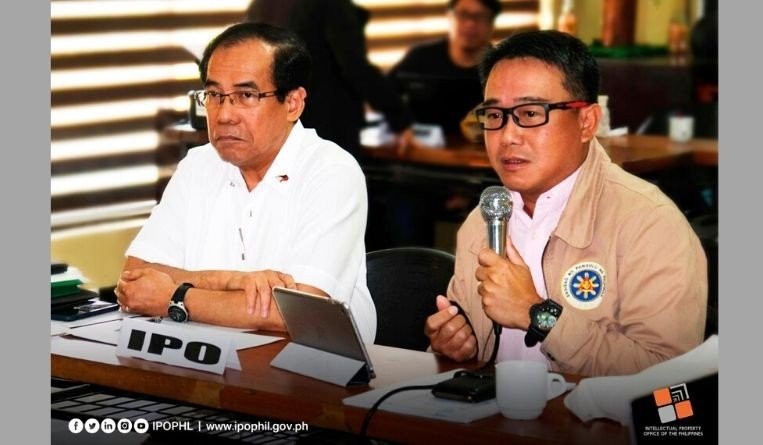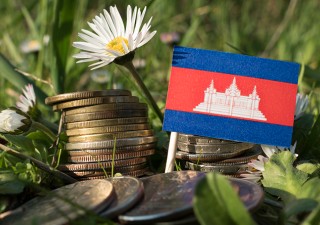NCIPR Eyes Enforcement Data Enhancement for Better Policy, Strategy Formulation
24 June 2020
 Image credits: IPOPHL
Image credits: IPOPHL
The National Committee on Intellectual Property Rights (NCIPR) was formed in 2008 with the purpose of strengthening intellectual property (IP) rights enforcement in the Philippines. Twelve years on, the NCIPR surely did not disappoint with its accomplishment of many and enormous successes, such as maintaining good standing in the United States’ Special 301 Report for seven straight years and the recent removal of the Philippines as priority in the European Commission’s biennial watchlist.
As the 12-member agency celebrates its 12th founding anniversary this month, let us look back at how much the NCIPR has hauled throughout its seizure operations, an activity which has helped IP rights holders establish a stronger case against their violators and prevent more consumers from being victims of the illicit trade.
The NCIPR grew an average of 55% annually during the decade, climbing from P3.52 billion (US$70.3 million) to P23.55 billion (US$470.3 billion). 2018 was its record-high year with tobacco and alcohol products topping the list of seized items. Following 2018 were 2014 with a haul of P13.33 billion (US$265.6 million) and 2011 with P8.38 billion (US$167.4 million).
While an annual increase of seizures has been attributed to growth in counterfeit trade, the increase in inspection operations must also be considered to know whether the haul is supported by bolstered enforcement efforts. True enough, the increase of NCIPR’s haul was paralleled by its inspection activities which jumped to 2,644 in 2018, up 69% from 1,565 in 2008.
The NCIPR’s seizure operations and litigation guidance, indeed, have been immensely useful for IP rights holders to go after those who have infringed on their rights as well as their cohorts.
In 2016, civil and criminal cases filed against counterfeiters totaled 186, climbing from 130 in 2012. Convictions, which were zero before the 2010 Special Rules on IP Litigation, have also increased gradually over the years — in 2015 there were four while 2018 saw seven — thanks to the creation of a detailed and cohesive IP handbook on enforcement guidelines and various capacity building programs for judges, prosecutors, and investigators.
.jpg)
Apart from these benefits IP rights holders reap from seizure operations per se, governments can take these activities as opportunities to collect information that prove helpful in understanding the various facets of the counterfeit trade, such as the most notorious marketplaces, emerging manufacturing and distribution techniques, entry into the market and payment facilities used. Seizures data can even be beefed up to identify possible points of corruption.
Seeing the many benefits realized from such wealth of information, Intellectual Property Office of the Philippines (IPOPHL) director general and NCIPR acting chair Rowel S. Barba sees it crucial for the NCIPR to step up its game in improving its methodologies and widening its scope for a better survey of the current counterfeiting and piracy situation as IP enforcement is more important today than ever.
“IP has always been everywhere around us. But with rapid technological advancements, IP-protected products are being produced at an unprecedented rate and trade is also made easier, allowing fast deliveries from anywhere in the world. The modern landscape, hence, compels us to cover all enforcement bases if we are to crack down more aggressively on counterfeiters and pirates. After all, it is by knowing who our enemies are, the size of their networks, their points of engagement and their strategies, that we can design more effective and impactful defense mechanisms and counter- efforts,” Barba said.
“As such, beefing up the collection of relevant and useful seizure information will be part of my plans for the NCIPR,” he added.

Beefing up awareness, IP rights enforcement personnel, and society partners
The plan, according to deputy director general and NCIPR vice chair Teodoro C. Pascua, is one part of the massive awareness campaigns the NCIPR is doing in order to help more people understand the economic consequences of counterfeiting and piracy.
He lamented how large flocks remain willing buyers of fakes to this day.
“NCIPR must continue intensifying its awareness of the public sector to progressively abandon its appetite for cheap, substandard and IP rights-violating products. This campaign is crucial especially in this crisis where many are laid off from their jobs, thus, have lower incomes that leave them no choice but to resort to cheap fakes. But this is wrong,” Pascua said.
“We must establish the attitude among consumers to buy original or not buy at all. While buying a fake bag, for instance, may look harmless, an accumulation of these purchases can lead to a loss of business appetite in the Philippine market, loss of investor confidence, missed collection of taxes — all of which lead to a lackluster economy,” Pascua added.
“As we are fighting a practice that has long been ingrained in our culture, the NCIPR will need a more serious and substantial support from all its member-agencies in order to further this to a whole-of-society fight.”
Under its 2019-2022 IP Rights Enforcement Action Plan, NCIPR is aiming to increase its financial resources and personnel to achieve more enforcement goals while also eyeing to put more government agencies on-board its network.
At present, the NCIPR is made up of the Department of Justice; Bureau of Customs; Food and Drug Authority; National Bureau of Investigation; Philippine National Police; Optical Media Board; National Book Development Board; Office of the Special Envoy on Transnational Crime; Department of the Interior and Local Government; and National Telecommunications Commission. The Department of Trade and Industry sits as its chair and IPOPHL as its vice chair.
Excel V. Dyquiangco






